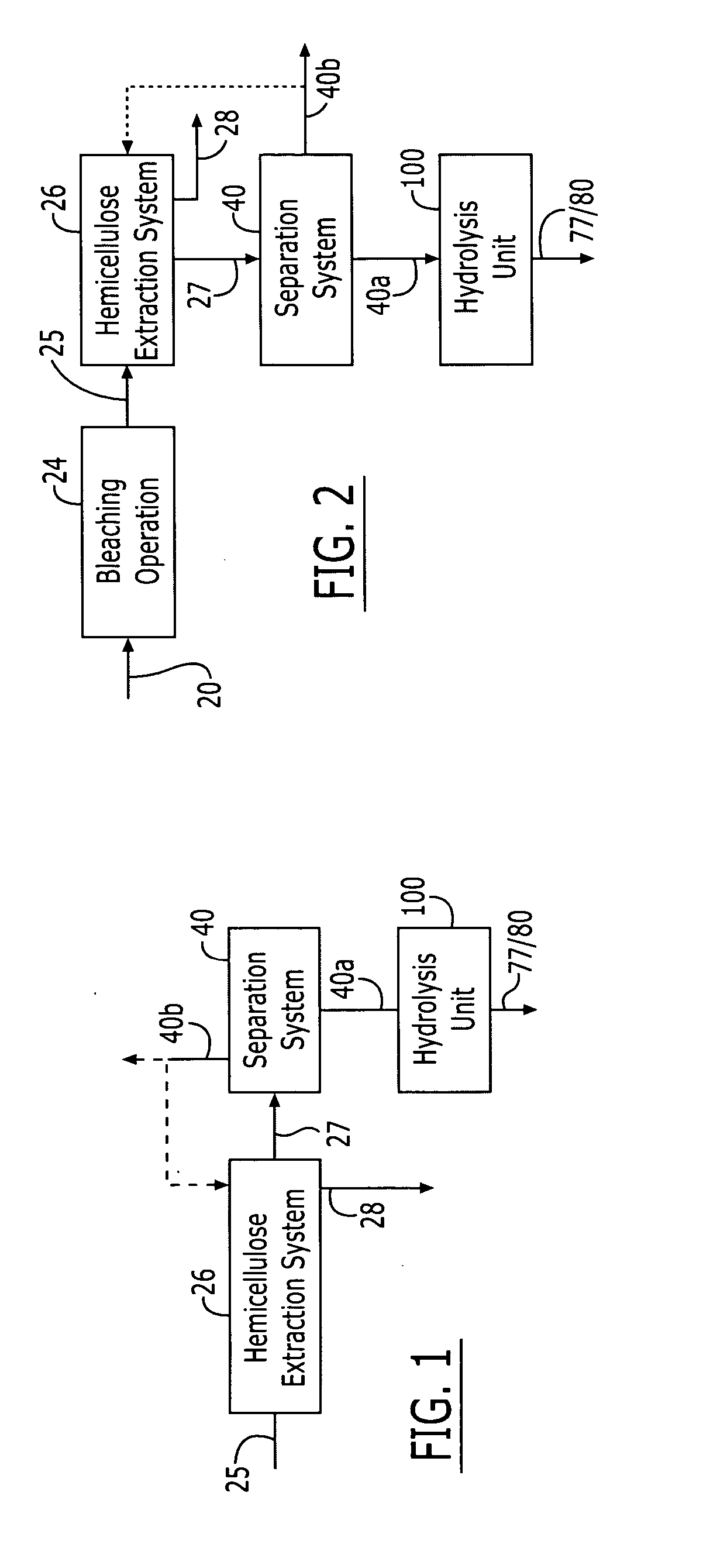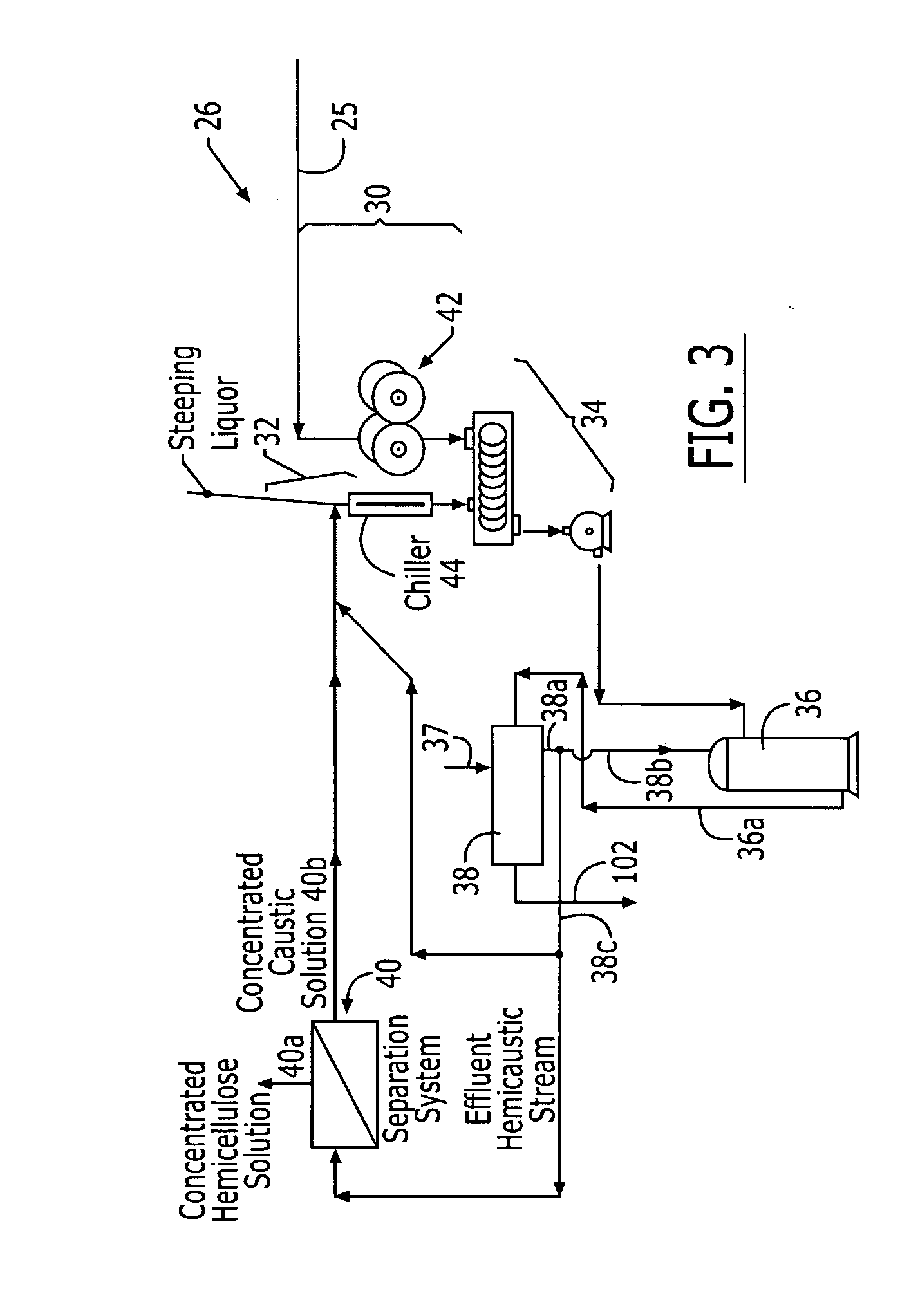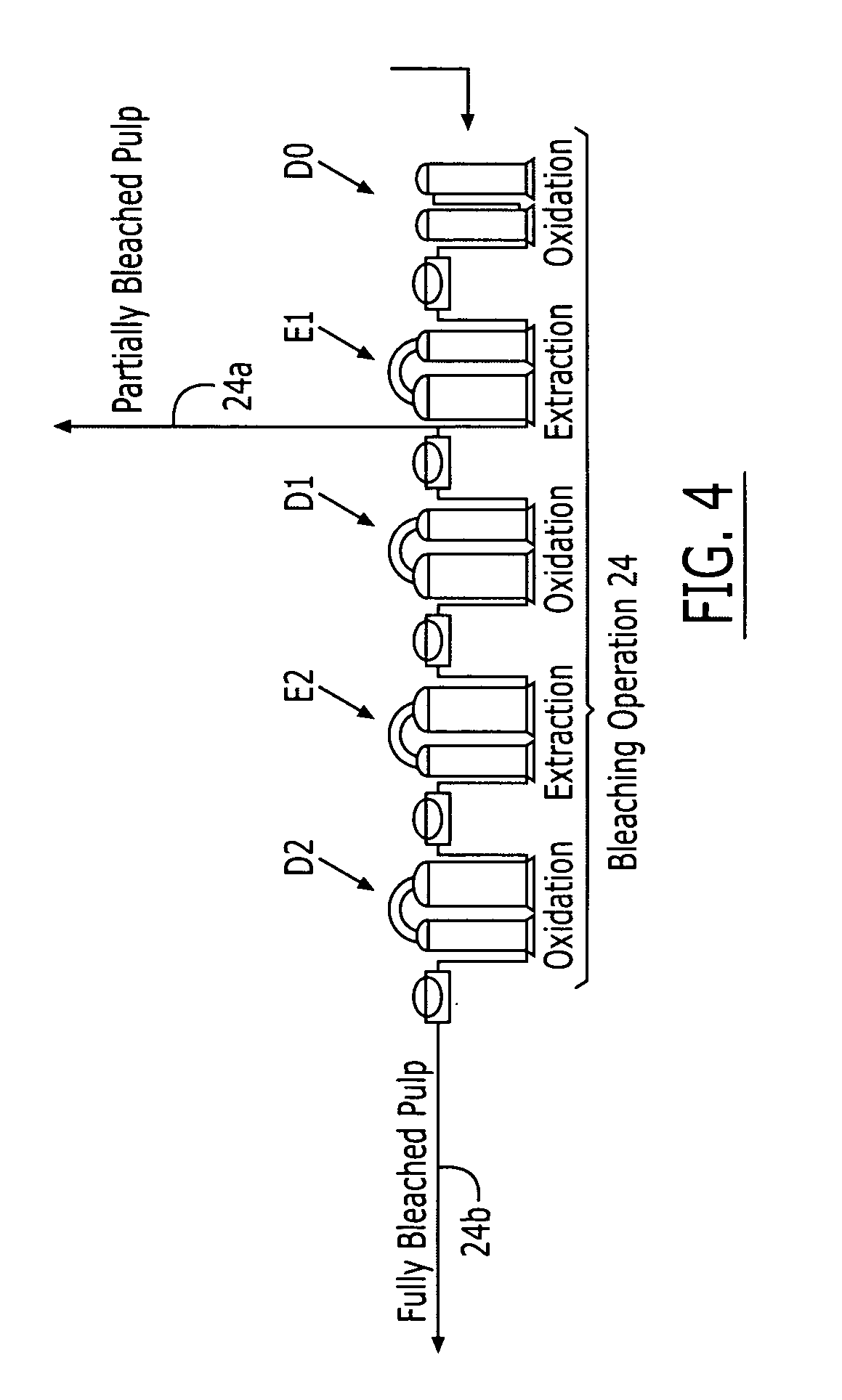Process for manufacturing high purity xylose
- Summary
- Abstract
- Description
- Claims
- Application Information
AI Technical Summary
Benefits of technology
Problems solved by technology
Method used
Image
Examples
example 1
Cold Caustic Alkaline Extraction
[0081] A hemicaustic solution was obtained from the Rayonier Corporation chemical cellulose mill (Jesup, Ga.—USA). The hemicaustic was a hardwood hemicellulose alkaline extract from a pre-hydrolyzed kraft fiber. The fiber was partially bleached in a conventional pulp bleaching operation prior to the hemicellulose extraction stage. The hardwood chip furnish used to make the fiber was composed of roughly 40% oak, 40% gum, and 10% maple (all hardwood species from the southeastern United States).
[0082] The components of the hardwood hemicaustic are shown in TABLE I, and are expressed as the percent weight of the hemicaustic solution. The individual sugar components of the hemicellulose are expressed as a weight percent of the total sugars liberated from the hemicellulose using the test method described above. These numbers give a relative weight fraction of the anhydrous sugar units that compose the hemicellulose. Furthermore, the average degree of pol...
example 2
[0093] A 300-gallon sample of hardwood hemicaustic was obtained from Rayonier Corporation (Jesup, Ga.—USA). The hemicaustic sample was processed using a KOCH nanofiltration unit in the same fashion as described in EXAMPLE 1. Concentrated hemicaustic generated by the nanofiltration unit contained roughly 12% wt hemicellulose and 2% wt NaOH.
Demineralization (Sodium Removal)
[0094] A portion of the concentrated hemicaustic was neutralized with 96% sulfuric acid. The resulting mixture was a milky, white slurry of precipitated hemicellulose. The neutralized mixture was filtered with a 1.21 μm porous acetate membrane filter. The resultant filter cake was a white hemicellulose “paste”. The filtrate, a clear light-yellow solution of sodium salt and other dissolved materials, was discarded. The hemicellulose paste was diluted in demineralized water. Properties of the diluted hemicellulose paste were measured, and are listed in TABLE IV. The total dissolved solids, sodium sulfate, and hemic...
example 3
[0101] Example 3 demonstrates yet another low cost method of producing a high purity xylose product. The same concentrated hemicaustic solution used in Example I (produced by nanofiltration of hardwood hemicaustic) is used in the following example. The concentrated hemicaustic contained 2.48% wt. NaOH and 12.0% wt. hemicellulose.
Demineralization (Sodium Removal)
[0102] A 1.25 inch diameter glass column was packed with 382 cm3 of Lewatit™ CNP 80 WS cation exchange resin (H+ form—manufactured by Bayer Chemical Corporation); a weakly acidic cation exchange resin made of cross-linked polyacrylic acid. A peristaltic pump was connected to the outlet of the column, and was used to draw feed material through the column, and discharge treated material into a collection bottle.
[0103] A 1.0L sample of concentrated hemicaustic was diluted with 1.0L of demineralized water. The mixture was heated to 50° C. in an isothermal water bath. The resin bed was then preheated to approximately 50° C. by...
PUM
| Property | Measurement | Unit |
|---|---|---|
| Temperature | aaaaa | aaaaa |
| Temperature | aaaaa | aaaaa |
| Fraction | aaaaa | aaaaa |
Abstract
Description
Claims
Application Information
 Login to View More
Login to View More - R&D
- Intellectual Property
- Life Sciences
- Materials
- Tech Scout
- Unparalleled Data Quality
- Higher Quality Content
- 60% Fewer Hallucinations
Browse by: Latest US Patents, China's latest patents, Technical Efficacy Thesaurus, Application Domain, Technology Topic, Popular Technical Reports.
© 2025 PatSnap. All rights reserved.Legal|Privacy policy|Modern Slavery Act Transparency Statement|Sitemap|About US| Contact US: help@patsnap.com



